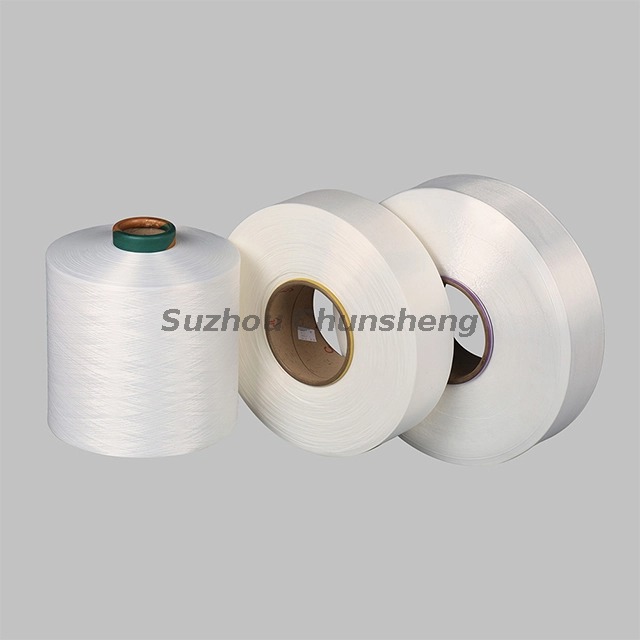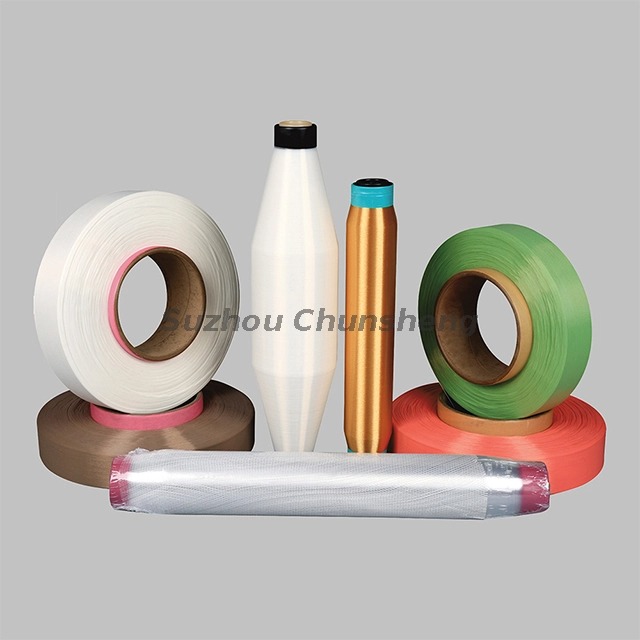T: +86-512-86871686
P: +86-13814898700
P: +86-13814898700
No.639 Yuanxin Road, Taoyuan Town, Wujiang, Suzhou, Jiangsu, China
Views: 194 Author: Site Editor Publish Time: 2025-09-27 Origin: Site
The textile and fashion industries are under increasing pressure to reduce their environmental impact, and yarn choices play a central role in this transformation. Among the many innovations available today, biodegradable yarn has become a point of discussion for both sustainability advocates and textile manufacturers. Its potential to return harmlessly to the environment sets it apart from traditional synthetic yarns that can persist for hundreds of years. However, the question remains: is biodegradable yarn truly an eco-friendly yarn option when considering the full lifecycle of production, use, and disposal? This article dives deep into biodegradable yarn, comparing it with other eco-friendly yarn choices, and examining whether it delivers real environmental benefits or simply serves as a green marketing tool.
Biodegradable yarn refers to fibers engineered or sourced to break down naturally in soil or composting conditions, without leaving behind harmful residues. Common examples include natural fibers such as cotton, wool, silk, hemp, and newer plant-based materials like banana fiber or bamboo yarn. Some manufacturers are also producing biodegradable synthetic yarns, made from polymers designed to degrade faster under specific conditions.
Unlike conventional polyester or nylon, which remain in landfills for centuries, biodegradable yarns attempt to close the loop by returning to nature. This property positions them as a potential eco-friendly yarn solution. Yet, biodegradability alone doesn’t always equal sustainability—it must be evaluated alongside energy use, water consumption, chemical treatments, and the durability of the final fabric.

When assessing whether biodegradable yarn is eco-friendly, it helps to compare it with other commonly available sustainable yarn types. Each category addresses different aspects of environmental responsibility.
| Yarn Type | Key Environmental Benefit | Limitations for Eco-Friendliness |
|---|---|---|
| Biodegradable Yarn | Breaks down naturally after disposal | May involve intensive farming or chemicals |
| Organic Cotton Yarn | Reduced pesticides and water management | Still resource-intensive if grown at scale |
| Hemp Yarn | Naturally pest-resistant, low water use | Limited large-scale adoption |
| Bamboo Yarn | Rapid renewable growth cycle | Processing may require heavy chemicals |
This comparison reveals that biodegradable yarn is not automatically superior. The eco-friendliness depends on how the yarn is produced, processed, and eventually disposed of. For example, hemp yarn may be less resource-intensive than conventional biodegradable cotton, making it arguably more eco-friendly in real-world practice.
Despite its complexities, biodegradable yarn does offer unique benefits that support eco-friendly textile practices.
Waste Reduction: Unlike synthetic yarns, biodegradable fibers can decompose naturally, reducing the long-term waste burden in landfills.
Soil Regeneration: In some cases, natural yarn decomposition can contribute organic matter back into the soil.
Lower Pollution Risks: By breaking down fully, biodegradable yarn avoids contributing to microplastic pollution in waterways.
Alignment with Circular Economy: Biodegradability supports circular fashion initiatives, where textiles are designed with end-of-life solutions in mind.
When these benefits are combined with responsible farming practices and low-impact dyeing methods, biodegradable yarn strongly supports the eco-friendly yarn movement.
While biodegradable yarn presents clear benefits, it also faces significant limitations that complicate its eco-friendly status.
Resource-Intensive Agriculture: Natural fibers like cotton require vast amounts of water and pesticides unless grown organically.
Chemical Treatments: Some yarns marketed as biodegradable may undergo chemical processes that compromise their environmental integrity.
Durability Trade-Off: Fabrics made from biodegradable yarn may not last as long as synthetic alternatives, leading to higher consumption.
Disposal Conditions: Biodegradability often requires specific conditions, such as industrial composting facilities, which are not widely accessible.
These limitations underline that biodegradable yarn is not a perfect solution, but rather one piece of the broader eco-friendly yarn puzzle.
Consumers often weigh the benefits of biodegradable yarn against recycled yarn, particularly recycled polyester. Each has distinct advantages.
| Factor | Biodegradable Yarn | Recycled Yarn (e.g., rPET) |
|---|---|---|
| End-of-Life Impact | Decomposes naturally | Non-biodegradable but repurposed |
| Resource Use | May require farming inputs | Reduces demand for virgin plastic |
| Durability | Often less durable | Generally more durable |
| Microplastic Pollution | No shedding risk | May release microplastics |
The choice depends on context. For short-life products like packaging or disposable textiles, biodegradable yarn may be more sustainable. For long-lasting fashion or technical textiles, recycled yarn might have a stronger eco-friendly impact by extending material life cycles.
Not all yarn marketed as biodegradable or sustainable is genuinely eco-friendly. Consumers and textile professionals can look for these indicators:
Certifications: Look for GOTS (Global Organic Textile Standard), OEKO-TEX, or Cradle to Cradle certifications.
Transparency: Brands that disclose farming practices, chemical use, and energy sources tend to offer more trustworthy products.
End-of-Life Guidance: Eco-conscious manufacturers often provide instructions on how to properly dispose of or compost yarn.
Blends vs. Pure Fibers: Blended yarns may contain non-biodegradable elements that reduce overall eco-friendliness.
By prioritizing these markers, it becomes easier to distinguish authentic eco-friendly yarn from greenwashing attempts.

Even the most eco-friendly yarn choices can lose their sustainability benefits if used irresponsibly. To maximize the environmental advantages of biodegradable yarn, consider:
Choosing Undyed or Low-Impact Dyed Yarns: Minimizes chemical waste.
Opting for Locally Sourced Fibers: Reduces transport emissions.
Extending Product Life: Use biodegradable yarn for durable items, not just disposables.
Composting Properly: Ensure disposal happens in conditions where biodegradability is possible.
These practices help ensure biodegradable yarn fulfills its promise as part of an eco-friendly textile system.
Biodegradable yarn holds significant potential as an eco-friendly yarn, particularly in reducing waste and avoiding microplastic pollution. However, it is not automatically sustainable, and its true impact depends on responsible production, use, and disposal. When compared to other eco-friendly yarns like recycled polyester, hemp, or organic cotton, biodegradable yarn emerges as one option among many rather than a definitive solution. The key to eco-friendly textiles lies in making informed choices—balancing durability, resource use, and end-of-life options.
1. Is biodegradable yarn always eco-friendly?
Not necessarily. While biodegradable yarn reduces waste, its eco-friendliness depends on factors such as farming practices, chemical use, and proper disposal conditions.
2. Which yarn is most eco-friendly?
There is no single answer. Hemp, organic cotton, bamboo, recycled polyester, and biodegradable yarn all offer benefits, but the best choice depends on the product’s purpose and lifecycle.
3. Does biodegradable yarn decompose in landfills?
Decomposition often requires specific conditions like oxygen, moisture, and microbial activity. In anaerobic landfills, breakdown may be very slow.
4. How can I ensure I’m buying truly eco-friendly yarn?
Look for credible certifications, transparent brand practices, and clear disposal instructions. Avoid products with vague “green” marketing claims.
5. Is recycled polyester yarn better than biodegradable yarn?
It depends on the context. Recycled polyester extends the life of plastic waste and offers durability, while biodegradable yarn eliminates long-term landfill impact. Each addresses sustainability differently.